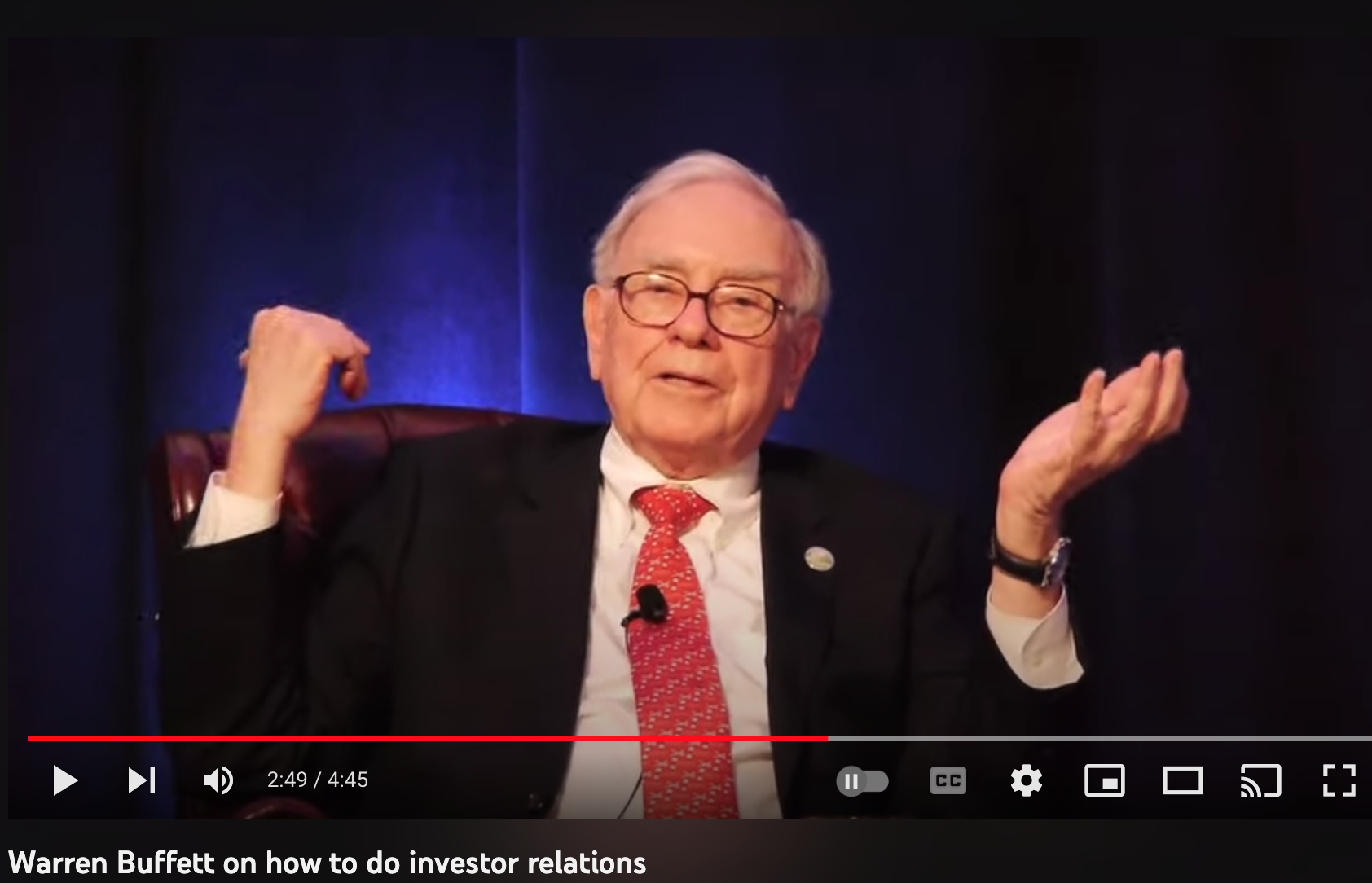Microcap IR is a Mess, but Warren Buffett has the Simple Solution: Candor
Warren Buffett speaking at NYSE via IR Magazine
Investor relations for microcap companies are mostly flawed and in need of reform. In fact, it’s not much of a secret, and I’ve yet to encounter an accomplished microcap investor or executive who does not feel the same way, though some are reluctant to say so on record. But especially in a difficult economic environment, microcaps need to stop wasting money on IR firms that don’t deliver sufficient value, stop publishing shareholder updates exclusively through rose-colored glasses, and stop flooding the newswire with hollow press releases. In short, microcaps should stop trying to put lipstick on a pig and simply be candid, like Warren Buffett advises and has long done himself at Berkshire Hathaway.
As Robert Hagstrom detailed in The Warren Buffett Way, “Buffett holds in high regard managers who report their company’s financial performance fully and genuinely, who admit mistakes as well as share success, and are in all ways candid with shareholders.”
Hagstrom continues, “Buffett also admires managers who have the courage to discuss failure openly. Over time, every company makes mistakes, both large and inconsequential. Too many managers, he believes, report with excess optimism rather than honest explanations, serving perhaps their own interest in the short term but no one’s interest in the long run.”
Buffett goes so far to say that “most annual reports are a sham” and cautions that “the CEO who misleads others in public may eventually mislead himself in private.”
Microcaps tend to be fledgling, dynamic companies, and any decent investor should expect there to be peaks as well as valleys. So, why is it so difficult for microcap CEOs to be candid with shareholders? Why do so many microcaps pay IR firms to put counterproductive spin on their communications?
One reason is what Buffett calls the “institutional imperative,” which is “the tendency of executives to mindlessly imitate the behavior of their peers, no matter how foolish it may be to do so.” Microcap executives see other companies using IR firms and feel compelled to follow suit.
But as I’ve written before, the reality is that some companies have taken spartan approaches to their investor relations, yet their stock prices have performed exceptionally well over time. In his book, The Outsiders: Eight Unconventional CEOs and Their Radically Rational Blueprint for Success, William Thorndike highlights how Teledyne had no investor relations department and never issued guidance. Teledyne’s CEO, Henry Singleton, “believed investor relations were an inefficient use of time and simply refused to provide quarterly earnings guidance.” Including Berkshire Hathaway, none of the other seven companies detailed in Thorndike’s book prioritized investor relations firms, but all of their stocks performed better than that of General Electric’s under legendary CEO Jack Welch’s tenure.
Another reason is that paying an IR firm to allegedly optimize a microcap’s narrative is easier than actually doing the work. Delighting customers, recruiting great talent, and maintaining a strong culture is grueling work, but it’s all necessary to build an enduring company. And microcaps can still maintain an honest dialogue with shareholders. As Buffett said at the New York Stock Exchange, “I don’t think it’s hard to have an effective communications vehicle with millions of people if you really want to do it.”
Warren Buffett speaking at NYSE via IR Magazine
The solution is for microcap CEOs to communicate with shareholders directly and simultaneously, as often as necessary. It can be quarterly or even more frequently, but it must be candid. If a company can’t admit its failures, in addition to its successes, shareholders know that it’s likely hiding something. If a manager can’t personally admit to mistakes, it usually shows shareholders even more about his or her character. Using IR firms to try and spin the story only makes things worse.
Ian Cassel, the MicroCapClub founder, has highlighted “multiple investor relations firms” as a red flag to investors. But even one is too many, if it doesn’t create value and therefore serve shareholders. Because candidly, you know what ultimately gets investors’ attention more than press releases? Profits.


